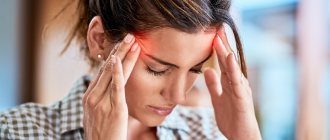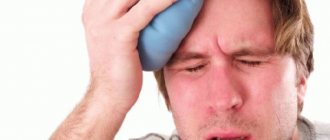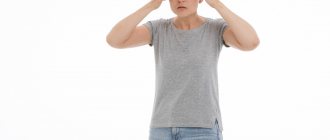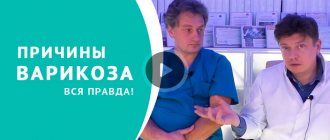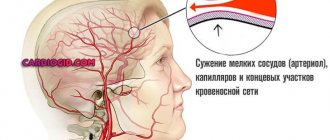For headaches and eye pain that occurs simultaneously, a person cannot always independently determine the cause and doesn’t know which doctor to see. Such a complex symptom can really cause difficulties, since may arise due to eye diseases, as well as for neuralgic disorders.
In any case, unpleasant sensations in the temples and eyes require examination by specialists, especially if they regularly make themselves felt.
Symptoms of pain in the eyes and temples
It is worth noting! Depending on the cause of the development of pain in the eyes and temples, this phenomenon may be accompanied by the following additional symptoms:
- a feeling of heaviness in the head generally or only in the temples;
- insomnia;
- constant fatigue, weakness, tiredness and apathy;
- dizziness;
- changes in blood pressure.
The symptom itself can have a different character and be pulsating, pressing or acute.
Causes
Such signs always refer to the head, and they only radiate to the eyes, although in case of infectious lesions (this is one of the causes of the symptom), pain in the eyes and temples has the same origin.
The following are the main reasons for this violation:
- Migraine . Pathology of a neurological nature, the origin of which cannot always be determined. A distinctive feature of the symptom is spontaneous attacks, sometimes occurring for no apparent reason. The pain is throbbing and can spread from the temples to one or both halves of the head. Treatment is prescribed after diagnosis and is carried out according to an individual scheme.
- Problems with intracranial or blood pressure . Aches in the eyes and temples are always accompanied by fatigue and apathy.
- Trigeminal neuralgia . It occurs as a result of inflammatory or infectious diseases and has a sharp pulsating character. In complex cases and with developing complications, treatment is prescribed in a hospital setting. The disorder cannot be treated with symptomatic medications: the underlying disease must be eliminated.
- Osteochondrosis. With this disease, the blood supply to the brain is disrupted, since the problem affects the cervical spine, reducing circulatory activity. Unpleasant sensations begin in the back of the head and over time radiate to the temples and move to the eye area.
- Glaucoma. The only disorder in which the main affected area is the eyes, and the aches spread to the temples from them. Since this disease can be accompanied by clouding of consciousness, nausea and weakness. In the first stages, in the absence of visual disturbances, it is confused with poisoning, which is also accompanied by pain in the eyes and head.
- Sarcoidosis. This pathology affects the lungs, but can affect many other body systems, including the organs of vision. Additional signs in addition to pain are redness of the eyes. Spasms occur from the nervous system, which leads to aching in the head.
- Temporal arteritis. Damage to the temporal arteries, most often occurring in old age due to structural changes in the vessels. In such cases, the pain is concentrated in the temporal region and may not always radiate to the eyes.
- Malignant or benign tumors in the eye orbit or in the brain . In the first case, everything is clear - destructive processes also cause painful sensations. If we talk about benign formations, they may not always manifest themselves in the form of pain, and the nature of the unpleasant sensations depends on their type. So, with neuromas, the pain is concentrated in the eye area, and with hemangiomas, the patient feels pain in the temples.
- Cluster violations . They most often do not have their own causes and are of a burning, sharp nature, which is sometimes difficult to associate with any external or internal factors. The main location is the temporal region on the left or right side. The pain goes only to the eye located on the same side.
- Pregnancy. During this period, aches in the temples are associated either with hormonal changes or (in later stages) with weight gain, which is not typical for slender women in their normal state and requires the expenditure of a large amount of the body's resources, hence the load on the circulatory system and blood supply disorders.
Important! Such pain can also occur in weather-dependent people when the weather changes, but specialists are not able to fully treat this condition and are ready to offer such patients only painkillers.
Unfavorable factors
Various disorders in the body can cause an abnormal condition. Most often this is associated with the functionality of the spine, its diseases (osteochondrosis, hernia, tumors of various types, spondylosis, previous trauma). These disorders lead to compressive pressure on the roots of the nerve canals, which causes severe pain to be transmitted to the central nervous system. Each touching of a nerve, its compression leads to an attack.
There is a high probability of pain paresis with previously diagnosed diseases:
- trigeminal neuritis;
- traumatic brain injury;
- damage to the glossopharyngeal processes;
- aneurysm, hematoma, tumor formations and cysts;
- osteomyelitis of the jaw.
A previous infection can also become an unfavorable factor, since extensive inflammation damages the internal organs of hearing and smell, and affects the intracranial nerve pathways.
Features of pain localization
Most often, pain in the temples and eyes spreads symmetrically to both halves , but sometimes the pain syndrome affects only the left or right side of the head and the organ of vision on the corresponding side.
Pain on the left may indicate an impending stroke , but mostly this happens after it.
In such people, pain in the left temple, radiating to the eye, may continue for the rest of their lives.
The side of localization may depend on the side of the trigeminal nerve lesion, as well as on the location of the tumors.
If the tumor is strongly displaced from the center to the left or right side, then it is on this side that the pain will be felt more clearly.
Drug treatment of temporal headaches
When choosing a treatment method for headaches in the temporal region, doctors at the Yusupov Hospital take into account the reason why it occurs. Treatment for tension headaches includes relief of painful episodes and preventative treatment.
In order to interrupt an attack of headache in the temples, simple analgesics and non-steroidal anti-inflammatory drugs are prescribed. Treatment with these drugs should be used when the frequency of attacks is no more than twice a week. The use of simple analgesics should not exceed 14 days per month. The use of any medications for pain relief is monitored by keeping a diary. In patients with chronic headaches and comorbid depression and anxiety, simple analgesics are usually ineffective, and excessive use of nonsteroidal anti-inflammatory drugs can lead to the development of drug dependence.
Patients are prescribed ibuprofen at a dose of 400 mg. It has the least potential to cause gastrointestinal complications. Frequent use of paracetamol in large doses can cause liver damage.
Preventive therapy is carried out for patients with chronic tension headaches. Antidepressants are most often used to prevent pain in the temples. Their effect is due to their own analgesic effect due to increased activity of descending analgesics. The analgesic effect of antidepressants occurs earlier than the antidepressant effect itself and when using smaller doses. The drug of first choice is amitriptyline. Other tricyclic and tetracyclic antidepressants, maprotiline, clomipramine, and mianserin, are also used.
For severe headaches in the temporal region, you can take a simple analgesic or ibuprofen. If the pain does not go away, seek specialized medical help by calling the Yusupov Hospital.
Should I see a doctor?
Note! If such a symptom appeared for the first time, it was managed to stop with the help of an anesthetic and it does not appear again - there is no reason to worry.
But if pain attacks recur regularly and intensify, you need to visit a therapist.
He prescribes diagnostics , which usually includes urine and blood tests, MRI and CT, angiography of cerebral vessels, and then refers the patient to an ophthalmologist or neurologist (depending on what assumptions about the diagnosis arise).
What are the ways to relieve pain?
For pain in the temples and head, professional (often complex) treatment is required, which can be prescribed by a therapist or a highly specialized specialist .
But on the part of the patient himself, symptomatic therapy is allowed, and first of all, this is taking painkillers , from which you can choose the following:
- aspirin;
- ibuprofen;
- paracetamol;
- triptan;
- spasmalgon.
If the patient is aware of problems with blood pressure or this is revealed during the examination, pressure stabilizers (enam, renitec, captopril) can be additionally used .
Need to know! Sometimes the necessary medications are not at hand - in such cases, the person himself is able to provide emergency assistance to himself, eliminating the pain or reducing its intensity.
If possible, apply a few drops of mint or eucalyptus essential oil or a warming agent (for example, finalgone) to the temples, rubbing such products with your fingers for several minutes.
At home, you can relieve pain by applying a cold compress made from a damp cloth to your forehead.
Additionally, you can drop a few drops of mint or rosemary oil or tea tree oil on it.
In the latter case, the compress should be additionally wrapped in cellophane, since tea tree extract can cause a chemical burn to the skin.
also drink black or green tea, adding a spoonful of honey , and also eat a handful of walnuts , adding a little honey and a piece of grated lemon with zest.
Stay up to date! The safest and most effective massage is that you can perform it yourself in several ways:
- Mentally drawing a line on your head from ear to ear, you need to determine its center. You need to press on this point for about two minutes with your index finger until pain appears in this place.
- After taking off your shoes and socks, you need to find your left and right feet and use your thumbs to alternately massage both feet for two minutes (during this time you need to make one hundred presses). This is a method of Chinese medicine, and despite the unobvious connection with headaches, this method helps many.
- Using the index fingers of both hands, you need to feel the small depressions on the outer corners of the eye (this is the area between the border of the orbital bone and the eyeball). To reduce pain, it is enough to perform several simultaneous presses on the left and right sides.
- There is a point above the nose, strictly in the middle between the eyes at the level of the eyebrows. You need to press on it with your index finger 20-30 times - and the pain will begin to subside.
Non-drug methods for treating temple headaches
Non-pharmacological treatment methods used by specialists at the Yusupov Hospital rehabilitation clinic are aimed at the main mechanisms involved in the formation of headaches. Among them, the leading ones are psychological factors (acute or chronic emotional stress), and muscle tension - myofascial, muscular-tonic, syndromes with the formation of trigger pain points.
The criteria for the use of non-drug treatments are:
- insufficient effectiveness of drug therapy;
- individual intolerance to drugs and or the occurrence of allergic manifestations when taking pharmacological agents;
- the patient’s tendency to become addicted and dependent when taking antidepressants and tranquilizers, which are widely used in the treatment of pain in the temporal region;
- development of abusive headaches with long-term use of analgesics in large doses;
- no contraindications to the use of non-pharmacological methods.
Pain is always a mental phenomenon. The longer and stronger the pain, the more often it is combined with anxious, depressive, hypochondriacal reactions, which can be primary or secondary. The duration and degree of pain affect the patient’s well-being and behavior. Under the influence of pain, personality traits, attitudes towards the world around us, ourselves, and the future change. Psychological correction carried out by rehabilitation clinic specialists is aimed at changing these negative influences, at the following points:
- improved personality functioning;
- correction of the patient’s experiences associated with the presence of constant long-term or paroxysmal recurring temporal headaches;
- elimination of existing emotional disorders.
Doctors at the Yusupov Hospital begin psychological correction from the very first conversation with the patient. The patient is given hope for improvement, anxiety is reduced, and he is encouraged to recover. In addition to an explanatory conversation, psychologists are in a state of hypnotic sleep.
Autogenic training includes:
- relaxation of skeletal muscles;
- regulation of regional heart rate, vascular tone, depth and frequency of breathing;
- mental relaxation through specially selected verbal formulas.
Breathing-relaxation therapy combines elements of mental and muscle relaxation with excursions of the chest in an inhalation-exhalation rhythm. Acupuncture is based on stimulation of strictly defined areas of the skin and subcutaneous tissue in the area of biologically active points. Postisometric relaxation is a technical type of manual therapy. It is used to induce muscle relaxation and pain relief.
Biofeedback is a method as close as possible to testing physiological functions. It differs from others by actively involving the patient himself in the treatment process. The method is based on biological control of physiological functions.
Light therapy is a method of exposure to bright white light. Through the retina, hypothalamus, and pineal gland, it affects circadian rhythms, the activity of melatonin receptors located outside the pineal gland, nonspecific brain systems, and changes endocrine, mental, and motor functions.

